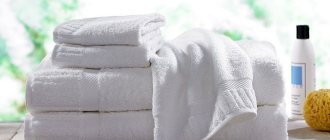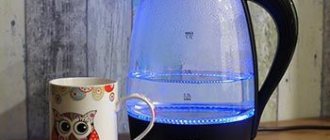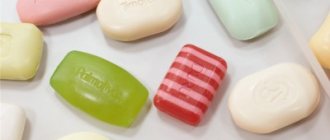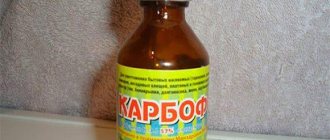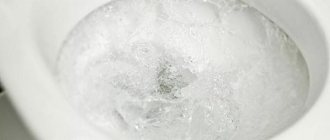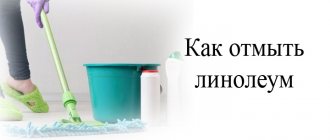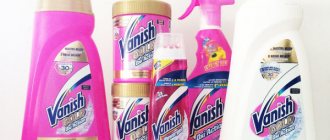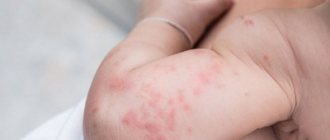Today, the choice of cleaning and disinfectants of imported and domestic production is very wide. However, Belizna, which in Soviet times was the most common solution for household needs, still stands apart. Knowing the instructions for use of the product, recommended proportions and safety precautions when working with it, you can use it for different purposes.
What is whiteness
The budget product, familiar from Soviet times, is a yellow-green liquid or gel with a pungent odor of chlorine. Because of its specific smell, it is mistakenly called bleach. According to GOST 32478-2013 whiteness composition: water, NaOCl - 5% or more, but less than 15%, NaOH - less than 5%, surfactants less than 5%, flavorings. Antiseptic and bleaching properties are provided by sodium hypochlorite (NaOCl), consisting of 95.2% active chlorine, and sodium hydroxide (NaOH). The bleach formula consists of hypochlorite, chloride and calcium hydroxide; this is a more caustic technical mixture, also known as bleach.
The most famous disinfectant for removing stains, whitening textiles, washing floors, kills all known germs.
Types and characteristics of whiteness
Whiteness is a bleach that has been popular for several generations. Like any chemical solution, it has advantages and disadvantages, which are listed in the table below.
| pros | Minuses |
| Cheap, accessible and ready to use product. Easily dissolves, works in cold water Efficiency is not inferior to expensive antiseptics Universal: suitable for cleaning various hard surfaces and washing (bactericidal and cleaning properties) | Only white cotton and linen fabrics are allowed to be washed. It has a shelf life of 12 months, but over time the effectiveness decreases as the chlorine evaporates. Deteriorates the strength of fabric with prolonged soaking and excess concentration. It is not suitable for machine washing, as it has a destructive effect on its parts. Irritates the mucous membrane of the eyes and respiratory tract, requires compliance with safety measures. |
“Belizna” has a composition that effectively copes with cleaning, disinfection and bleaching.
This bleach is available in several forms:
- A liquid aqueous solution in a plastic container with a volume of 1-5 liters is used for washing, disinfecting dishes and floors.
“Whiteness” copes well with the most problematic areas - plumbing fixtures, kitchen stove, sink and bathtub drains. - The gel consistency is convenient for cleaning plumbing fixtures and destroying mold. Available in plastic bottles of 0.5, 0.7 and 1 liter.
The shelf life of “Belizna” is 12 months; after a year, unused gel should be thrown away, as it will still “wear out.” - The powder does not contain sodium hypochlorite, so it is suitable for whitening white and colored clothes when machine washed.
The product is only suitable for white cotton and linen fabrics. - The tablet form comes with and without chlorine. In the first case, 20 tablets replace 10 liters of an aqueous whitening solution and have traditional universal use; in the second, only whitening properties are present.
For bleaching and machine washing at the same time, the product must be used with extreme caution.
Important! The chlorine content in bleach makes it unsuitable for caring for colored, silk, wool and synthetic products; adding it when washing children's underwear is not recommended.
Methods of application
Due to its composition and characteristics, whiteness is widely used in everyday life and industry.
At home it is used:
- As a laundry bleach. To achieve the result, no boiling or prolonged soaking is required.
If you still decide to wash in a machine with the addition of bleach, use cold water modes.
- When cleaning and disinfecting premises. Suitable for tiles, metal, plastic, glass surfaces.
First, rinse the surface with plain water to get rid of dust and household dirt, then wipe with “White” diluted with water (ratio 1:20).
- Like a cleaning gel. Effectively removes plaque and contamination from plumbing fixtures and cleans pipes.
To unclog drains, use undiluted solution.
- To destroy fungus. The aggressive composition suppresses the proliferation of fungal spores and is effective against black mold.
The product will not only remove existing fungus, but also prevent the appearance of new ones.
- For disinfecting litter trays of pets.
It is enough to rinse the tray with a disinfectant once a week.
An unconventional method of application involves removing burnt-on food debris from the bottom of the pan: pour over the stain and leave overnight. The method is safe, since drinking water is purified by the same active ingredient - sodium hypochlorite.
For daily washing in ordinary situations, there is no need to use a chemically aggressive dishwashing composition.
Designers take advantage of chlorine's ability to corrode paint and use bleach to lighten clothes.
It has a negative effect on the fabric when used repeatedly - it becomes thinner and quickly breaks.
In addition to the home, whiteness is used in other areas:
- In industry it acts as an oxidizer in chemical production processes.
- In medicine for disinfection and sterilization of equipment and hospital wards.
- In agriculture and household use for burning grass, moss, killing insects, cleaning aquariums, animal and bird cages.
- In the food industry for treating kitchen surfaces and dishes.
- For disinfection of swimming pools and water disinfection.
For surface treatment, use a concentration of 1:10. That is, 100 ml of product is needed for 1 liter of water.
Additional Information. After defrosting, the bleach retains its properties; storage at temperatures from -25 to +30 degrees is permissible.
Instructions for use
Whiteness is used as a bleach as follows:
To rid clothes of gray and yellowness, dilute in cold or cool water (30-35 degrees) in a ratio of 2 tablespoons per 7-10 liters of liquid. The laundry is soaked in this solution for 60 minutes. Stains are removed by spot application of undiluted substance for no more than 1 minute. After soaking and removing stains, clothes are thoroughly rinsed to avoid skin irritation, and then washed with regular powder.
To maintain whiteness, it is enough to periodically soak them for 20-30 minutes.
Additional Information. When machine washing, make sure there is no prohibition on the use of chlorine-containing components. Add bleach directly to the drum and set the wash cycle to low water temperature and an extra rinse.
It is more convenient to disinfect plumbing fixtures with bleach with a gel consistency, since it does not drain from the surface and manages to penetrate deeply into the contamination. Following the manufacturer's instructions, apply the whitening gel for 5-10 minutes, then rinse thoroughly. To clean the sewer drain, pour 1 liter of undiluted antiseptic into the toilet and leave it overnight, rinsing it off in the morning.
“Belizna” is a disinfectant that effectively fights microorganisms, bacteria and viruses.
Due to the fact that the product is effective against grease, it is used to clean and disinfect dishes and cutlery. To do this, kitchen utensils should be left in a 10% solution of the product, washed in running water after half an hour and wiped dry.
The product is used to disinfect dishes made of porcelain, earthenware or plastic.
When cleaning premises, we use a solution of the same concentration as for washing dishes - 100 ml of sterilizing agent per 1 liter of water or half a tablet per 5 liters of water.
Treat surfaces and rinse again with clean water after 15 minutes.
Important! Do not use on laminate or acrylic bathtubs.
Precautionary measures
Whiteness gives a positive result only when used correctly. If you do not follow caution and safety measures, you can cause harm to your health.
When working with white, it is important to follow the following rules:
- Work with rubber gloves, avoid contact of the product with the skin of your hands;
- Do not smoke or eat when working with the product;
- Avoid contact with mucous membranes. If this cannot be avoided, rinse thoroughly with warm water;
- Carry out work in well-ventilated areas;
- Keep out of the reach of children.
Harm to health from whiteness
The disinfectant has aggressive properties, so it must be used in accordance with the recommendations indicated on the label. Chlorine in its composition negatively affects humans:
- Its vapors irritate the respiratory tract, causing coughing, sneezing, and a sore throat. Such exposure occurs when working in an unventilated area, but does not lead to severe poisoning.
- Redness of the eyes and conjunctivitis are also consequences of contact with a chlorine-containing solution. When such signs appear, it is enough to wash your eyes, gargle, and go out into the fresh air.
- Children are most susceptible to burns to the esophagus and gastrointestinal tract when swallowing white stuff. Symptoms of poisoning: nausea, vomiting blood, headache, high fever. As first aid, before doctors arrive, it is necessary to perform gastric lavage and gargling with the addition of raw egg white.
- Chemical burns are possible if they come into contact with the eyes. To avoid this, you must immediately rinse your eyes with running water and apply sodium sulfacyl eye drops. If you have cutting pain, you need qualified help.
- Contact dermatitis, burning, redness are unpleasant consequences for the skin when working without gloves. A solution of baking soda relieves itching and relieves the condition.
Since “Belizna” is a powerful bleaching agent, it must be used carefully, following simple recommendations.
Note! Severe poisoning from inhalation of vapors is possible in case of acute allergy to the components that are included in the composition.
No product with a bactericidal or bleaching effect is absolutely harmless, for this reason it is necessary to take precautions when coming into contact with it:
- Keep out of the reach of children.
- Wear protective gloves, a mask, and goggles when working.
- Do not mix with other chemicals.
- Ventilate the room.
- After completing the work, change clothes.
If you forget to wear gloves, be sure to wash your hands well with soap and running water.
Release forms
Whiteness is available in 3 types: liquid, gel and tablets. The last two forms of release appeared not so long ago; they make it easier to control the dosage of the product when used for various needs. Each of the release forms has some differences and features.
The gel consistency allows the active substance not to drain from the surface on which it is applied, but to remain on it as long as possible to achieve maximum effect. For this reason, the gel is better suited for cleaning and disinfecting plumbing fixtures and any other hard surfaces. In addition to the main components, the gel contains perfumes, a thickener and a rust solvent.
IMPORTANT! Store the product with the lid tightly closed, otherwise the product will lose its properties.
Another release option is tablets. They dissolve in water and are an analogue of a solution of liquid whiteness with water. Tablets are more convenient to use to obtain the desired concentration of the substance. For example, to clean the floor, 1 tablet per 10 liters of water is enough.
What is whiteness concentrate
The concentrated product has three times more economical consumption. The difference is that the composition is more aggressive and dangerous, therefore it is more often used in the industrial sphere than in everyday life.
It is used to clean equipment, hard surfaces in public places, vehicles, etc.
According to the instructions for using whiteness, its concentrate is diluted in a ratio of 5 ml per liter of water for preventive cleaning, 6 ml for sanitary washing, and 0.35 ml is required when soaking laundry. In its pure form, it is suitable for breaking through a sink drain: just pour a small amount of gel for 30 minutes.
“Whiteness” is a good antiseptic. The oxidative processes that occur with its help kill microbes and prevent the proliferation of bacteria.
Most modern household chemicals have a limited spectrum of action, so dozens of bottles accumulate in the house: for dishes, bathrooms, toilets, floors, glass and mirrors, washing clothes, etc. They can easily be replaced by white, since its active substance copes with various contaminants, returns freshness to white things, cleans and disinfects.
The gel-like composition does not spread, it is easier to apply and remove.
The product is effective against scale, soap scum, and grease. In addition, the product has an affordable price and is available in several forms; if safety precautions are followed, it does not pose a threat to others.
Compliance with safety precautions and the correct use of “Whiteness” will allow you to keep your house clean and keep your clothes snow-white without wasting extra money.
A little history
In Ancient Egypt, in order to get beautiful clothes and bed linen, it was customary to bleach cotton. Since there were no chemicals intended for this purpose at that time, this procedure was carried out simply by aging the material under the rays of the sun. Later, other methods of bleaching both raw materials and finished items were used in different countries. Chemicals began to be used for this purpose only at the end of the 19th century. Sodium hypochloride turned out to be the most effective and inexpensive remedy. Compositions intended for whitening are still produced based on it. Including the well-known “Whiteness”, instructions for use of which will be discussed below.

